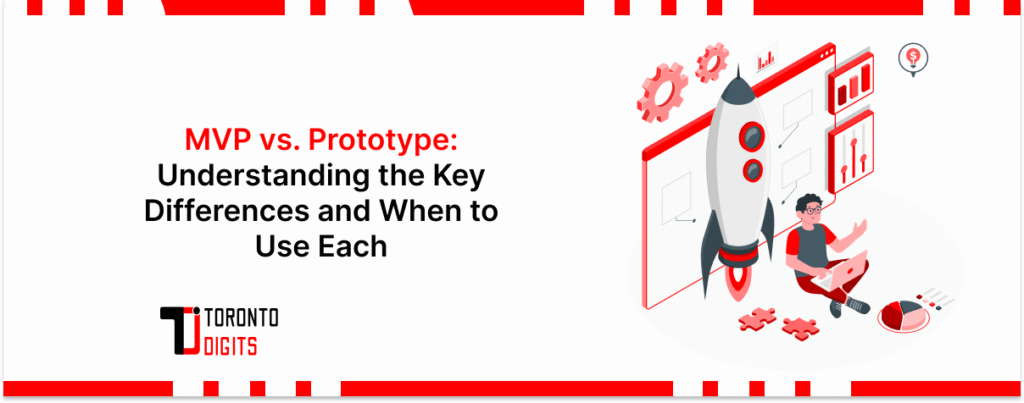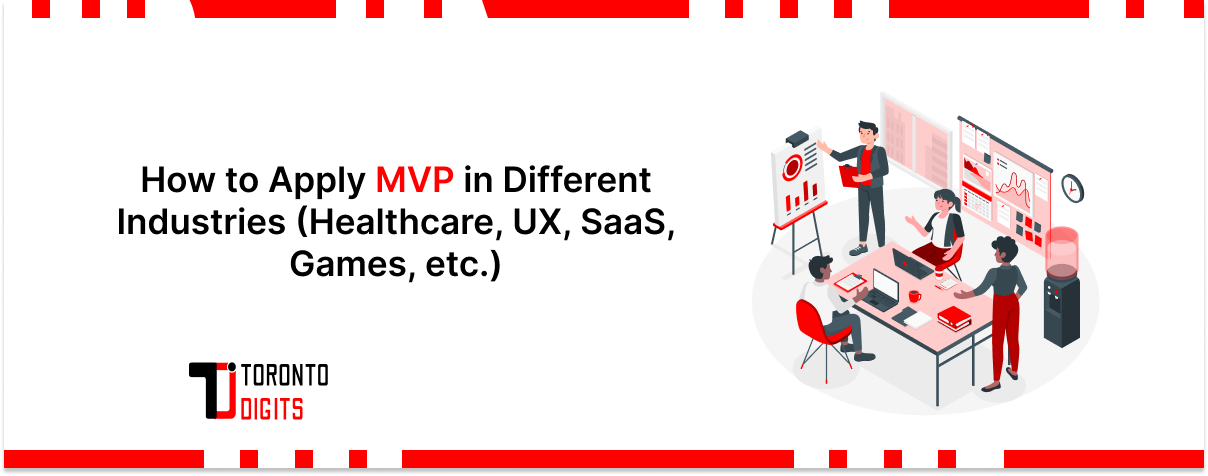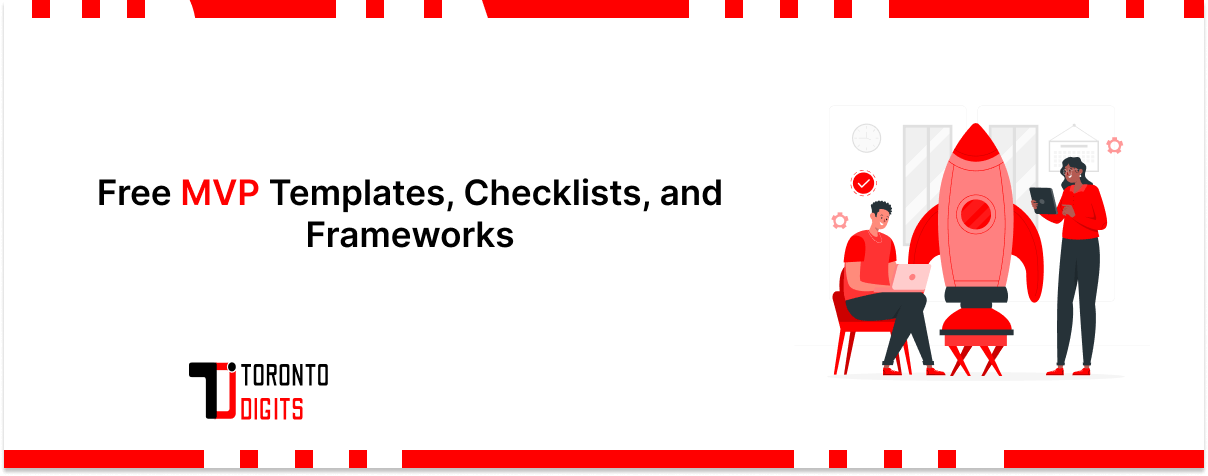MVP vs. Prototype
When you’re starting to build an app, getting real feedback from users early on is crucial. To do that, you typically have two choices: make a prototype or build a Minimum Viable Product (MVP). In this article, we’ll break down what sets them apart and when to use each.
App development can be expensive and take a long time, sometimes months or even years. If you wait too long to catch mistakes or misunderstand what your users need, you could waste a lot of time and money.
Many companies fall into the trap of creating fully-featured products that look great but don’t actually solve real problems for their users. That’s an expensive lesson you want to avoid.
We’ll walk you through the minimum viable product vs prototype debate, highlight the pros and cons of each, and show you the tools and strategies that can help. You’ll also see how the line between these two methods is starting to blur.
What’s a Prototype?
Think of a prototype as the first draft of your idea—something you can see, touch, and share with others. It’s no longer just a thought in your head; it’s a visual or interactive model that brings your concept to life.
Prototypes can be super simple, like hand-drawn sketches, or more detailed, like clickable mockups. How advanced it is depends on how much time and effort you want to put in.
The big benefit? It helps you clearly show your idea to designers and developers so everyone’s on the same page. But keep in mind—a prototype usually doesn’t function yet. It’s more like a product’s packaging: you can see what it looks like, but nothing’s actually working inside.
You can make your prototype as basic or detailed as needed, depending on your goals and technical skills.
What’s a Minimum Viable Product (MVP)?
An MVP—or Minimum Viable Product—is the simplest working version of your app that still gets the job done.
While a prototype is more about how an app looks and feels, an MVP is something real users can actually use. It may not have every feature you’re dreaming of, but it covers the essentials to solve the core problem.
The MVP idea started with startups in the tech world, especially in SaaS (Software as a Service). These companies needed to launch fast, test their ideas with real users, and start growing. Today, MVPs are used by all kinds of businesses to build both customer-facing apps and internal tools.
In practice, companies often compare minimum viable product vs proof of concept (PoC) or minimum viable product vs minimum marketable product (MMP) to decide the best approach. While a PoC validates feasibility, an MVP validates usability, and an MMP validates market readiness.
Let’s say you’re creating software to streamline a business process. Instead of waiting months to build a full product, you can roll out just the key features. This way, your team can start benefiting from it right away, and you can add more improvements over time.
An MVP isn’t about being perfect—it’s about being useful, fast. It’s a smart way to deliver real value without delay.
Prototype vs. MVP: The Key Differences
While both prototypes and MVPs help bring your app idea to life, they serve different purposes. The main differences come down to scope, commitment, and audience:
1. Scope
Prototypes are quick, flexible, and low-effort. You can make several versions, test different ideas, and scrap what doesn’t work—no big deal.
MVPs are a bigger step. Once you’ve picked the idea you want to move forward with, you build a functional version. That takes more time, resources, and a larger team.
2. Commitment
Creating a prototype doesn’t require a huge commitment. If an idea flops, you can toss it and start fresh, especially if it’s just a sketch or clickable design.
An MVP, on the other hand, means you’ve invested more development time, budget, and team effort. Even though it’s built to be lean, going back to square one after launching an MVP can be tough.
3. Audience
Prototypes are mostly for internal use. They’re great for sharing ideas with your team, designers, or developers. Sometimes they’re used in presentations or crowdfunding campaigns, but they’re not built for end users.
MVPs are made for the real world. They’re aimed at your actual users, so you can see how your product performs in the market. Since the MVP is a working product, it sets the stage for how customers will see your brand moving forward.
Building Your MVP or Prototype?
Wondering how to create an MVP or prototype? While each requires different resources and data, some key principles apply to both:
1. Focus on customers
Many successful companies attribute their winning products to customer focus. Your product’s goal is to deliver value to the users. So, concentrate on who you’re building for.
2. Use data to drive decisions
You don’t need to be an expert in data analysis, but numbers matter. Even if you’re building your first product with limited data, think about what information you want to gather from your MVP or prototype. This will help you in the development of future versions.
3. Be willing to let go
You might love your MVP or prototype. But if nobody else feels that way about your product, it’s time to rethink. Launching something nobody wants leads to failure.
4. Take action
You can spend too much time making your prototype as perfect as possible before moving to an MVP. You can also overwork your MVP before launch. If you want to create successful products, you need to let your target users see them at some point.
When to Build Prototypes and MVPs
We’ve seen key differences between prototypes and MVPs. Now, let’s explore when each is generally created.
Both are used in application development projects, including commercial, internal, and consumer-facing software. We’ll focus on their use in internal applications. Keep in mind, this isn’t always an either/or choice. You might use both MVP and a prototype at different stages of the same project.
Prototypes
Prototyping is crucial in traditional SDLCs, including Agile and Waterfall methods. It’s particularly valuable for large-scale, complex software projects.
After gathering requirements and creating wireframes, development teams build prototypes to show stakeholders, including users and decision-makers. They seek approval and feedback on their solution before building the actual product.
This process can apply to the entire project or individual features and modules.
The project’s scope and complexity influence whether prototyping is worthwhile. The key factor is the time and effort needed to create a functional solution for user feedback. This will lead to sheer wastage of money if major changes are needed later.
For larger projects, getting early user input becomes increasingly important.
MVPs
MVPs are used in different contexts:
For simpler solutions, following a conventional development lifecycle with requirements gathering and prototyping might be unnecessary. For example, if you could build 90% of an internal tool in a week, spending two days on a prototype and another day seeking approval might not be efficient.
MVPs often serve as a more affordable option to conventional prototyping in smaller-scale projects.
In larger projects, MVPs might be used at later stages than prototypes. The ultimate goal is to start delivering value to your target users as soon as possible.
MVPs can help minimize time-to-value for larger internal applications.
However, some projects require high centralization and control, which may rule out the MVP approach.
Prototypes and MVPs: Limitations and Challenges

Both prototyping and creating MVPs have their own challenges and limitations. Understanding these helps you make informed decisions about when and how to use each approach.
Prototype Challenges
Prototyping can face these problems:
- Unhelpful or contradictory user feedback
- Getting prototype approval can be difficult, causing delays and costs
- Building prototypes needs extra work before the project starts
- Prototyping doesn’t necessarily speed up product development, as it often focuses on basic functionality and visual elements.
- Unclear expectations can lead to project spillover and scope creep
MVP Challenges
Creating MVPs also has its difficulties:
- Without a prototype, you gather user feedback later in the development process
- Some businesses just for the MVP and don’t carry out planned later iterations
- MVPs often put less focus on user experience, leading to less sophisticated UIs and design elements
- Building an MVP for large-scale or complex use cases can be risky if you’re unsure of the solution’s validity
- You might not know if your solution is effective until after you’ve built the MVP
Overcoming Challenges
These issues aren’t insurmountable. They highlight how important it is to choose the right development approach for each context.
By understanding the strengths and weaknesses of both prototypes and MVPs, you can make better decisions about which approach to use for your specific project needs.
Conclusion: Choosing Between MVP and Prototype
The decision between creating an MVP or a prototype depends on your project’s specific needs. Both approaches have their strengths and can be valuable tools in your product development process.
Prototypes excel at visualizing ideas and gathering early feedback, making them ideal for complex projects or when you need stakeholder buy-in. They allow you to test concepts without heavy investment.
MVPs, on the other hand, focus on delivering core functionality quickly. They’re perfect for validating your product in the market and starting to provide value to the target users as soon as possible.
Remember, these approaches aren’t mutually exclusive. Many successful projects use both, leveraging prototypes for initial concept testing and MVPs for market validation.
The key is to understand your project’s goals, timeline, and resources. By doing so, you can choose the approach that best fits your needs and sets you up for success.
Want to streamline your product development journey?
At TorontoDigits, we craft custom prototypes and MVPs designed to deliver real results. Our smart, user-first development process helps you bring your ideas to life faster and with more confidence.
Let’s talk! Reach out today and discover how we can guide you through the MVP vs. prototype choice—and get your product moving in the right direction.
FAQs
1. Is a prototype the same as an MVP?
No. A prototype is a visual or interactive draft of your product idea, while an MVP is a functional product with core features. The minimum viable product vs prototype comparison highlights that one is for concept validation, the other for real-world testing.
2. What is the difference between MVP and PoC?
A proof of concept (PoC) checks if an idea is technically feasible, while an MVP validates whether users actually want the product. So, minimum viable product vs proof of concept is essentially usability vs feasibility.
3. Can a prototype be an MVP?
Not exactly. A prototype shows what the product could look like, while an MVP delivers a usable version. However, in some cases, a highly interactive prototype can evolve into an MVP.
4. What comes first, PoC or MVP?
Typically, a PoC comes first to test feasibility. Once that succeeds, teams move toward a prototype for design validation, and finally, an MVP for real user testing.
5. What is the difference between MVP and the final product?
An MVP has only the core features needed for validation, while the final product is the fully developed version with complete features and a polished design.
6. What’s the difference between MVP and MMP?
The minimum viable product vs minimum marketable product difference is simple: an MVP tests core functionality with early adopters, while an MMP is polished enough for wider commercial launch.
7. What is the opposite of minimum viable product?
The opposite could be considered a “fully-featured final product” — something complete, polished, and market-ready without shortcuts.
8. What is EVP vs MVP?
EVP stands for “Exceptional Value Proposition” or sometimes “Employee Value Proposition.” While MVP focuses on functionality, EVP emphasizes the value delivered to either employees or customers. This aligns with the minimum viable product vs maximum value proposition debate, where the latter focuses on maximizing perceived value.
9. What is MVP also known as?
MVP is sometimes also referred to as “minimum valuable product” in certain contexts, highlighting customer value over minimal functionality. This is part of the minimum viable product vs minimum valuable product discussion in product strategy.
10. Is MVP the same as a final product?
No. An MVP is an early version meant for validation, while the final product is feature-rich and ready for full-scale launch.




